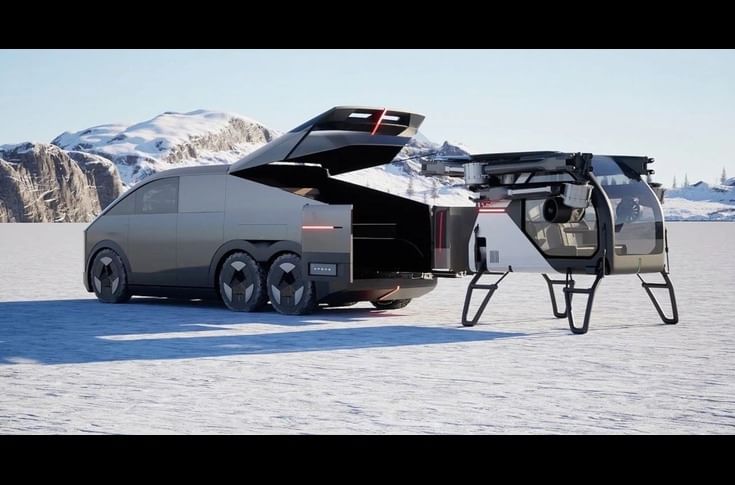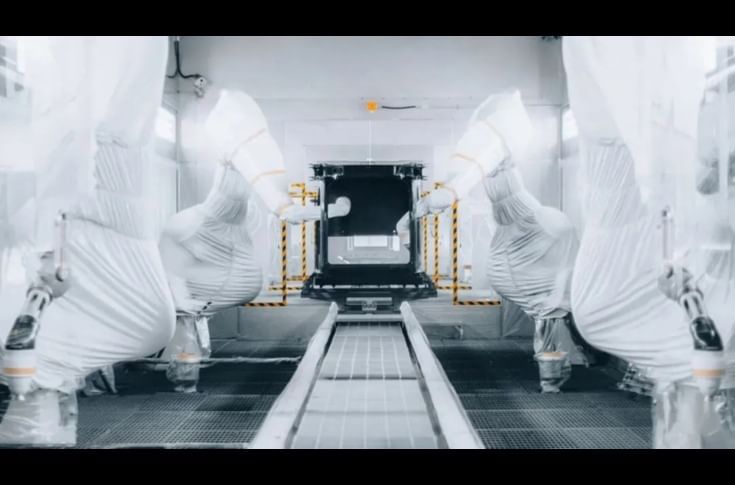Xpeng Motors’ subsidiary Aridge has rolled out the first production-ready unit of its “Land Carrier” modular flying car from a new facility in Guangzhou’s Huangpu District — marking what the company claims is the world’s first mass-production line for flying cars. The initial units will serve as experimental prototypes for performance and manufacturing validation ahead of commercial deliveries slated for next year.
Modular Flying Car: What exactly is it?
The Land Carrier comprises two modules — a land vehicle and an aerial vehicle — that can be detached and reconnected. The ground-based “mother vehicle” uses a three-axle, six-wheel configuration with all-wheel drive and rear-wheel steering, giving it both off-road capability and load-carrying strength. At around 5.5 metres long, 2 metres wide, and 2 metres tall, the road-going module fits into a standard parking space and can be driven with a regular license. The flying module, made of carbon-fibre composites, features a six-rotor, dual-ducted layout for improved lift and stability, coupled with a 270-degree panoramic cockpit for enhanced visibility.
Flying car manufacturing plant Built for Scale
The 120,000-square-metre plant houses five major workshops — composites, propulsion, assembly, painting, and final integration. The composites workshop produces lightweight carbon-fibre parts such as rotor blades and body panels, targeting 300 tons annually, ranking among the world’s largest aviation carbon-fibre facilities. The propulsion unit uses the world’s first integrated assembly and testing line for electric drives and rotors, with fully automated traceability for all parts. Cold-connection techniques like riveting and adhesive bonding are used in fuselage assembly, while the painting line applies an advanced “8C6B” multi-layer spray process.
The final assembly integrates nine major systems — including flight control, autonomous driving, and propulsion — with a cloud-based calibration system verifying safety, stability, and airworthiness.
How does the Land Carrier Flying car work?
The Land Carrier supports both manual and autonomous flight. Manual mode uses a single-stick control system, while autonomous operation enables AI-based route planning, one-touch takeoff and return, 3D vision landing assistance, and automated flight path management. The factory uses solar power, energy-efficient systems, and a digital energy management platform to lower emissions. At full capacity, the Guangzhou facility can produce up to 10,000 flying cars annually, with an initial capacity of 5,000 units, capable of rolling out one aircraft every 30 minutes.
